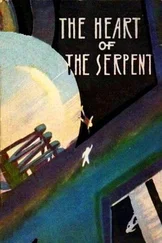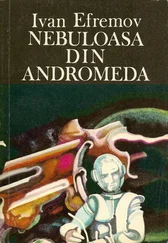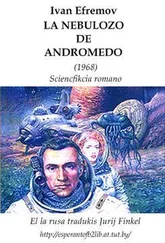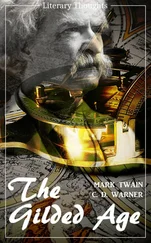Ivan Yefremov - Andromeda (A Space-Age Tale)
Здесь есть возможность читать онлайн «Ivan Yefremov - Andromeda (A Space-Age Tale)» весь текст электронной книги совершенно бесплатно (целиком полную версию без сокращений). В некоторых случаях можно слушать аудио, скачать через торрент в формате fb2 и присутствует краткое содержание. Город: Moscow, Год выпуска: 1959, Издательство: FOREIGN LANGUAGES PUBLISHING HOUSE, Жанр: Фантастика и фэнтези, на английском языке. Описание произведения, (предисловие) а так же отзывы посетителей доступны на портале библиотеки ЛибКат.
- Название:Andromeda (A Space-Age Tale)
- Автор:
- Издательство:FOREIGN LANGUAGES PUBLISHING HOUSE
- Жанр:
- Год:1959
- Город:Moscow
- ISBN:нет данных
- Рейтинг книги:5 / 5. Голосов: 1
-
Избранное:Добавить в избранное
- Отзывы:
-
Ваша оценка:
- 100
- 1
- 2
- 3
- 4
- 5
Andromeda (A Space-Age Tale): краткое содержание, описание и аннотация
Предлагаем к чтению аннотацию, описание, краткое содержание или предисловие (зависит от того, что написал сам автор книги «Andromeda (A Space-Age Tale)»). Если вы не нашли необходимую информацию о книге — напишите в комментариях, мы постараемся отыскать её.
Andromeda (A Space-Age Tale) — читать онлайн бесплатно полную книгу (весь текст) целиком
Ниже представлен текст книги, разбитый по страницам. Система сохранения места последней прочитанной страницы, позволяет с удобством читать онлайн бесплатно книгу «Andromeda (A Space-Age Tale)», без необходимости каждый раз заново искать на чём Вы остановились. Поставьте закладку, и сможете в любой момент перейти на страницу, на которой закончили чтение.
Интервал:
Закладка:
“What do you think of Mven?” Veda inquired, “now that you know him better.”
“Mven Mass is a splendid combination of the cold intellect and the archaic fury of desires. He is a man of great ability and is highly educated but at the same time he is the high priest of nature’s elemental forces!”
Veda Kong burst out laughing. “How can I learn to give such precise character studies?!”
"Psychology is my line,” said Evda, shrugging her shoulders. “But let me ask you a question. Do you know that Darr Veter is a man that I like very much?”
“You’re afraid of half-formed decisions?” Veda blushed. “No, this time there will be no fatal half-way decisions and insincerity. Everything is as clear as crystal….’’ Under the penetrating glance of the psychiatrist, Veda continued:
“Erg Noor… our ways parted long ago. I could not give way to a new feeling as long as he was in the Cosmos. I could not draw myself away and so weaken the strength of my hopes, my faith in his return. Now it is only a case of precise calculation and confidence. Erg Noor knows everything but is going his own way.”
Evda Nahl placed her slender arm round Veda’s shoulder.
“So it’s Darr Veter?”
“Yes,” answered Veda, firmly.
“Does he know?”
“No. Later, when Tantra arrives…. Isn’t it time for us to go back?”
“I have to leave the fete,” said Evda Nahl, “my holiday is finished. I have a big job to do in the Academy of Sorrow and Joy, and I must see my daughter before I go there.”
“Is she a big girl?”
“Seventeen. My son is older. I have done the duty of every woman who is normally developed and has normal heredity — two children, no less! Now I want a third one — but I want him grown up!” Evda Nahl smiled and her serious face was lit up with the tenderness of love, her bow-shaped upper lip lifted slightly.
“I imagine a fine, big-eyed boy with such a loving and ever-astonished mouth… with freckles and a snub nose,” said Veda, slyly, looking straight in front of her. Her companion, after a short pause, asked her;
“Have you got any new job yet?”
“No, I’m waiting for Tuntra, then there will be a big expedition.”
"Then come with me to visit my daughter,” suggested Evda, and Veda gladly consented.
The whole of one wall of the observatory was taken up with a seven-metre hemispherical screen for the demonstration of films and photos taken by powerful telescopes. Mven Mass switched on a general view of a section of the sky near the North Pole of the Galaxy, the meridional strip of constellations from Ursa Major to Corvus and Centaurus. In this part, in Canes Venatici, Coma Berenices and Virgo there were many galaxies, islands of stars in the form of flat wheels or discs. An especially large number of them had been discovered in Coma Berenices — separate galaxies, of regular and irregular form, showing different degrees of revolution and projection, some of them inconceivably far away, at a distance of thousands of millions of parsecs, often forming whole “clouds” of tens of thousands of galaxies. The biggest of the galaxies are anything from 20,000 to 50,000 parsecs in diameter, like the stellar island or Galaxy NN 89105 + SB 23, in the old days known as M 31, or the Andromeda Nebula. This little, faintly gleaming, nebulous cloud could be seen from Earth with the naked eye. Long before this people had discovered the secret of this cloud. The nebula proved to be a gigantic, wheel-shaped stellar system one and a half times the size of our huge Galaxy. The study of the Andromeda Nebula, despite the fact that it was 450,000 parsecs distant from terrestrial observers, did much to help gain knowledge of our own Galaxy.
Mven Mass remembered from childhood the magnificent photographs of the various galaxies that had been obtained by means of electron inverted pictures or by radio telescopes such as the gigantic Pamir and Patagonia installations, each of them almost 400 kilometres in diameter, that penetrated even deeper into the Cosmos. The galaxies, monster clusters of billions of celestial bodies separated by distances of millions of parsecs, had always aroused in him an irrepressible desire to know the laws of their constitution, the story of their origin and their further evolution. The main thing that intrigued every inhabitant of Earth was the possibility of there being life on the countless planetary systems in these islands of the Universe, the question of the fires of thought and knowledge that burned there, of human civilizations in those infinitely distant spaces of the Cosmos.
Three stars appeared on the screen that the ancients had named Alpheratz, Mirach and Almak, (α, β, γ Andromedae), arranged in an ascending straight line. On either side of this line were the two galaxies close to each other, the Andromeda Nebula or M 31, and the beautiful spiral of M 33 in the Triangnlum Constellation. Mven Mass changed the metal film.
He was now looking at the galaxy known in ancient days as M 51, in the Canes Venatici, 800,000 parsecs away. This was one of the few galaxies that we see “flat,” our line of sight being perpendicular to the plane of the “wheel.” It has a very bright, dense core made up of countless millions of stars from which two spiral arms stretch out, each of them with similarly dense star clusters at the beginning. Their long ends seem to get fainter and more nebulous until they disappear into the darkness of space, stretching for tens of thousands of parsecs from each other in opposite directions. Between the arms, or main branches, there are short streams of stellar condensations and clouds of luminous gas alternating with black “voids,” accumulations of dark matter; the bright arms are all curved like the blades of a turbine.
The huge galaxy NGK 4565 in the Coma Berenices Constellation was a very beautiful one. At a distance of a million parsecs it was seen edgeways. Leaning over to one side, like a soaring bird, the galaxy spread its thin disc, apparently consisting of spiral branches, over a huge area; the central core was a greatly oblate spheroid that burned brightly and had the appearance of a solid gleaming mass. It could be clearly seen that the islands of stars were so flat that the galaxy could be compared to a thin wheel belonging to some clockwork mechanism. The edges of the wheel were indistinct, they seemed to merge into the bottomless void. Our Sun is located on just such an edge of a galaxy together with a tiny speck of dust called Earth that, linked by the power of knowledge with many inhabited worlds, is spreading the wings of human thought over the infinity of the Cosmos!
Mven Mass then switched the projector over to the galaxy NGK 4594 in the Virgo Constellation; this galaxy, also visible in its equatorial plane, had always interested him. It stood at a distance of ten million parsecs from Earth and resembled a thick lentil of burning stellar material wrapped in a layer of luminescent gas. A thick black line, a condensation of dark material, cut the lentil along its equator. The galaxy looked like a mysterious lantern shining out of an enormous abyss.
What worlds were hidden there, in a galaxy whose total radiation was brighter than that of other galaxies and averaged that of an F class star? Were there any mighty inhabited planets there? Was thought there also grappling with the mysteries of nature?
The fact that the huge clusters of stars did not answer made Mven Mass clench his fists. He realized the terrific distances involved — light from the galaxy he was looking at travelled thirty-two million years to reach Earth. Sixty-four million years would be required to exchange information!
Mven Mass selected another reel and on the screen there appeared a big, bright, round patch of light amongst dispersed, faint stars. An irregular black strip cut the patch in two, making the brightly gleaming fiery masses on either side of it still brighter by contrast and thickening towards its ends and overshadowing an extensive field of the burning gas that formed a ring round the bright patch. This was a picture of colliding galaxies in the Cygnus Constellation that had been obtained by the most remarkably ingenious technical set-ups. This collision of giant galaxies, each equal in size to our Galaxy or to the Andromeda Nebula, had long been known as a source of radio emanation, probably the most powerful in the part of the Universe that we could probe. Rapidly moving gas streams of colossal size set up electromagnetic fields of such inconceivable power that they sent out news of the titanic catastrophe to all ends of the Universe. Matter itself sent out this alarm signal from a radio station with a power of a quintillion megawatts. So great was the distance to the galaxies, however, that the picture on the screen showed its state millions of years before. The present state of these two galaxies, passing one through the other, will be known on Earth such a long time after that we cannot say whether terrestrial man will continue to exist so unimaginably long.
Читать дальшеИнтервал:
Закладка:
Похожие книги на «Andromeda (A Space-Age Tale)»
Представляем Вашему вниманию похожие книги на «Andromeda (A Space-Age Tale)» списком для выбора. Мы отобрали схожую по названию и смыслу литературу в надежде предоставить читателям больше вариантов отыскать новые, интересные, ещё непрочитанные произведения.
Обсуждение, отзывы о книге «Andromeda (A Space-Age Tale)» и просто собственные мнения читателей. Оставьте ваши комментарии, напишите, что Вы думаете о произведении, его смысле или главных героях. Укажите что конкретно понравилось, а что нет, и почему Вы так считаете.











